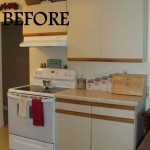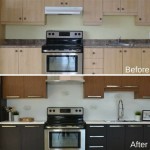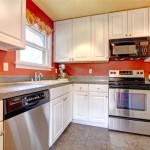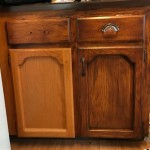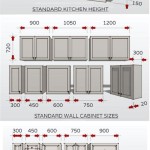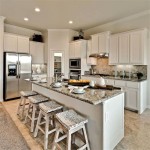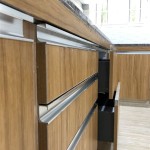Kitchen Cabinet Ideas: A Comprehensive Guide to Style, Functionality, and Organization
Kitchen cabinets represent a significant investment and play a crucial role in both the aesthetic appeal and functional efficiency of a kitchen. Selecting the right cabinets involves careful consideration of numerous factors, including style preferences, budgetary constraints, spatial limitations, and storage needs. This article provides a comprehensive overview of various kitchen cabinet ideas, exploring different styles, materials, layouts, and organizational strategies to assist homeowners in making informed decisions.
Understanding Kitchen Cabinet Styles
Cabinet style dictates the overall visual character of the kitchen. Several distinct styles cater to varied tastes and architectural designs. Identifying a suitable style early in the remodeling process helps narrow down options and ensures cohesion with the overall design theme.
Traditional Cabinets: Traditional cabinets are characterized by their intricate detailing, often featuring raised panel doors, ornate carvings, and decorative hardware. Common wood species used in traditional cabinetry include cherry, maple, and walnut, often finished with rich stains and glazes to highlight the wood grain. This style evokes a sense of formality and elegance, often complemented by crown molding and other decorative elements.
Contemporary Cabinets: Contemporary cabinets emphasize clean lines, minimalist design, and a focus on functionality. Flat-panel doors are a hallmark of this style, often constructed from materials like laminate, metal, or glass. Contemporary kitchens often feature frameless construction, which maximizes interior storage space. Color palettes tend to be neutral, with white, gray, and black being popular choices. Hardware is typically sleek and understated, further enhancing the minimalist aesthetic.
Transitional Cabinets: Transitional cabinets bridge the gap between traditional and contemporary styles, offering a balanced and versatile look. They often incorporate elements of both styles, such as Shaker-style doors with a more streamlined profile. This style allows for a wider range of material and color choices, making it adaptable to various design preferences. Transitional kitchens often feature a mix of natural and manufactured materials, creating a warm and inviting atmosphere.
Shaker Cabinets: Shaker cabinets are renowned for their simplicity and functionality. They are characterized by their five-piece flat-panel doors with a recessed center panel. Typically made of wood, often maple or birch, Shaker cabinets are known for their clean lines and understated elegance. Their versatility allows them to seamlessly integrate into various kitchen styles, from traditional to contemporary. Shaker cabinets can be stained or painted in a variety of colors, offering homeowners ample design flexibility.
Farmhouse Cabinets: Farmhouse cabinets evoke a sense of rustic charm and warmth. They often feature distressed finishes, beadboard detailing, and exposed hardware. White or cream-colored paint is a common choice for farmhouse cabinets, contributing to the style's light and airy feel. Open shelving is also a characteristic element of farmhouse kitchens, allowing for the display of decorative items and everyday essentials.
Exploring Kitchen Cabinet Materials
The choice of cabinet material significantly impacts the durability, aesthetics, and cost of kitchen cabinets. Different materials offer varying degrees of resistance to moisture, wear and tear, and staining. Understanding the properties of each material is essential for selecting cabinets that meet both practical and aesthetic requirements.
Wood Cabinets: Wood cabinets are a classic and versatile choice, offering a natural warmth and beauty. Different wood species exhibit varying grain patterns, colors, and densities, influencing the overall look and durability of the cabinets. Maple, cherry, oak, and birch are commonly used for kitchen cabinetry. Hardwoods like maple and cherry are more resistant to dents and scratches, while softer woods like pine may be more susceptible to damage. The cost of wood cabinets can vary depending on the species, grade, and construction method.
Plywood Cabinets: Plywood is an engineered wood product made from layers of wood veneer glued together. It is a stable and durable material that resists warping and cracking, making it a good choice for cabinet boxes. Plywood is often used in conjunction with solid wood for cabinet doors and frames. The cost of plywood cabinets is generally lower than solid wood, making it a budget-friendly option.
MDF Cabinets: Medium-density fiberboard (MDF) is another engineered wood product made from wood fibers, resin, and wax. It is a smooth and uniform material that is ideal for painting and laminating. MDF is less susceptible to warping and cracking than solid wood, but it is also less resistant to moisture. MDF cabinets are often used in contemporary kitchens with painted finishes. They are generally more affordable than solid wood or plywood cabinets.
Laminate Cabinets: Laminate is a synthetic material made from layers of paper and resin. It is a durable and easy-to-clean material that is available in a wide range of colors and patterns. Laminate cabinets are often used in contemporary and modern kitchens. They are a cost-effective option that offers good resistance to moisture and stains.
Metal Cabinets: Metal cabinets, typically made of stainless steel, offer a sleek and modern aesthetic. They are durable, easy to clean, and resistant to moisture and heat. Metal cabinets are often used in commercial kitchens but are also gaining popularity in residential settings. They are a more expensive option but offer a unique and durable solution for kitchen cabinetry.
Optimizing Kitchen Cabinet Layout and Organization
Efficient kitchen layout and organization are crucial for maximizing space and functionality. Careful planning of cabinet placement and internal organization can significantly improve the flow of traffic and ease of use in the kitchen.
Cabinet Layout Options: Several common kitchen layouts exist, each with its own advantages and disadvantages. The choice of layout depends on the size and shape of the kitchen, as well as the homeowner's preferences.
One-Wall Kitchen: This layout is suitable for small spaces and apartments. All cabinets and appliances are located along a single wall. This layout is efficient but may lack counter space for larger cooking tasks.
Galley Kitchen: This layout features two parallel rows of cabinets and appliances, creating a narrow corridor. Galley kitchens are efficient for cooking but can feel cramped if not properly designed. Ample aisle space is crucial for ease of movement.
L-Shaped Kitchen: This layout consists of two adjacent walls of cabinets and appliances, forming an "L" shape. L-shaped kitchens are versatile and can accommodate a variety of kitchen sizes. They often incorporate a kitchen island for additional counter space and storage.
U-Shaped Kitchen: This layout features three walls of cabinets and appliances, forming a "U" shape. U-shaped kitchens offer ample counter space and storage, making them ideal for serious cooks. This layout requires a larger kitchen space to avoid feeling cramped.
Kitchen Island: A kitchen island is a freestanding cabinet unit that provides additional counter space, storage, and seating. Islands can be incorporated into various kitchen layouts to enhance functionality and create a focal point. They can house sinks, dishwashers, or cooktops, further expanding their utility.
Internal Cabinet Organization: Internal cabinet organization accessories can significantly improve the usability of kitchen cabinets. These accessories help maximize storage space, improve access to items, and prevent clutter.
Pull-Out Shelves: Pull-out shelves allow for easy access to items stored deep within cabinets, eliminating the need to reach and bend. They are particularly useful for storing pots, pans, and other heavy items.
Drawer Dividers: Drawer dividers help organize utensils, cutlery, and other small items, preventing them from shifting and cluttering the drawer.
Spice Racks: Spice racks provide a dedicated space for storing spices, keeping them organized and easily accessible.
Lazy Susans: Lazy Susans are rotating shelves that maximize storage space in corner cabinets, allowing for easy access to items stored in the back.
Trash and Recycling Pull-Outs: Trash and recycling pull-outs conceal waste containers, keeping them out of sight and preventing odors.
Vertical Dividers: Vertical dividers are useful for storing baking sheets, cutting boards, and other flat items, preventing them from cluttering the cabinet.
Door-Mounted Organizers: Door-mounted organizers can be used to store cleaning supplies, spices, or other small items, maximizing storage space on the inside of cabinet doors.
By carefully considering the style, material, layout, and organization of kitchen cabinets, homeowners can create a functional and aesthetically pleasing kitchen that meets their individual needs and preferences.

Kitchen Cabinet Ideas The Home Depot

10 Kitchen Cabinet Ideas For Small Homes

15 Stunning Kitchen Cabinet Designs In Singapore With 5 Essential Tips

Kitchen Cabinet Ideas The Home Depot

Kitchen Wardrobe Cabinet Ideas For Your Home Designcafe

15 Kitchen Cabinet Ideas And Trends For 2024

70 Best Small Kitchen Design Ideas Layout Photos

8 Small Space Kitchen Cabinet Designs That Will Definitely Inspire You

13 Kitchen Design Ideas That Increase Home Value Curbio

15 Kitchen Cabinet Ideas And Trends For 2024
Related Posts

